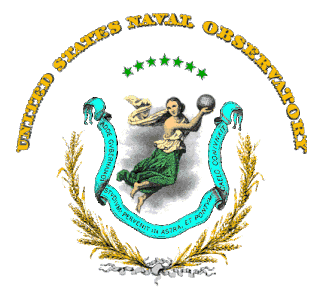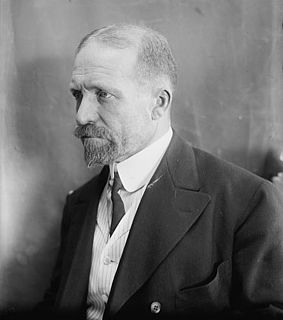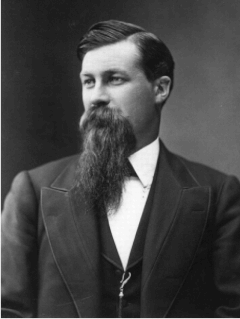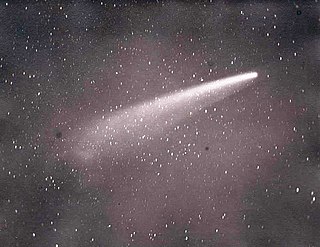
The United States Naval Observatory (USNO) is one of the oldest scientific agencies in the United States, with a primary mission to produce positioning, navigation and timing for the United States Navy and the United States Department of Defense.

Beloit is a city in Rock County, Wisconsin, United States. As of the 2010 census, the city had a population of 36,966 people.

Beloit is a city in and the county seat of Mitchell County, Kansas, United States. As of the 2010 census, the city population was 3,835.

The McDonald Observatory is an astronomical observatory located near the unincorporated community of Fort Davis in Jeff Davis County, Texas, United States. The facility is located on Mount Locke in the Davis Mountains of West Texas, with additional facilities on Mount Fowlkes, approximately 1.3 kilometers (0.81 mi) to the northeast. The observatory is part of the University of Texas at Austin. It is an organized research unit of the College of Natural Sciences.

The Washburn Observatory is an astronomical observatory located at 1401 Observatory Drive on the University of Wisconsin–Madison campus in Madison, Wisconsin, United States. Completed in 1881, it was a major research facility for about 50 years. Today, it is home to the UW-Madison College of Letters and Science Honors Program, while the telescope remains in use by students in introductory astronomy courses and the general public during open houses and viewings.

Henrietta Swan Leavitt was an American astronomer. A graduate of Radcliffe College, she worked at the Harvard College Observatory as a "computer", tasked with examining photographic plates in order to measure and catalog the brightness of stars. This work led her to discover the relation between the luminosity and the period of Cepheid variables. Leavitt's discovery provided astronomers with the first "standard candle" with which to measure the distance to faraway galaxies.

David Peck Todd was a noted American astronomer. He produced a complete set of photographs of the 1882 transit of Venus.
Herbert Hall Turner FRS was a British astronomer and seismologist.

Thomas Chrowder Chamberlin was an American geologist and educator. In 1893 he founded the Journal of Geology, of which he was editor for many years.

Beloit College is a private liberal arts college in Beloit, Wisconsin. Founded in 1846, when Wisconsin was still a territory, it is the state's oldest continuously operated college. It is a member of the Associated Colleges of the Midwest and has an enrollment of roughly 1,400 undergraduate students.

The Great Comet of 1882 formally designated C/1882 R1, 1882 II, and 1882b, was a comet which became very bright in September 1882. It was a member of the Kreutz Sungrazers, a family of comets which pass within 1 R☉ of the Sun's photosphere at perihelion. The comet was bright enough to be visible next to the Sun in the daytime sky at its perihelion.

The Canyon Diablo meteorites include the many fragments of the asteroid that created Meteor Crater, Arizona, United States. Meteorites have been found around the crater rim, and are named for nearby Canyon Diablo, which lies about three to four miles west of the crater.

The William Miller Sperry Observatory, also known simply as the Sperry Observatory, is an astronomical observatory owned by Union County College and operated by Amateur Astronomers, Incorporated. The observatory is located on the property of Union County College on their Cranford, New Jersey campus. It was named after William Miller Sperry and dedicated in 1967.

Philander Smith College is a private historically black college, in Little Rock, Arkansas. Philander Smith College is affiliated with the United Methodist Church and is a founding member of the United Negro College Fund (UNCF). Philander Smith College is accredited by the North Central Association of Colleges and Schools.

Rollin Daniel Salisbury was an American geologist and educator.

Lucien Bonaparte Caswell was an American politician.

Arthur Henderson Smith was a missionary of the American Board of Commissioners for Foreign Missions noted for spending 54 years as a missionary in China and writing books which presented China to foreign readers. These books include Chinese Characteristics, Village Life in China and The Uplift of China. In the 1920s, Chinese Characteristics was still the most widely read book on China among foreign residents there.

The Thompson Observatory was an astronomical observatory at Beloit College in Beloit, Wisconsin. The observatory was built in 1968 to replace the Smith Observatory, which had been built in the 1880s. The new observatory was named in honor of Alfred S. Thompson of the Beloit College Class of 1892.
Patton & Fisher was an architectural firm in Chicago, Illinois. It operated under that name from 1885 to 1899 and later operated under the names Patton, Fisher & Miller (1899–1901) and Patton & Miller (1901–1915). Several of its works are listed on the National Register of Historic Places.
Gilbert Morgan Smith was a botanist and phycologist, who worked primarily on the algae. He was best known for his books, particularly the Freshwater Algae of the United States, the Marine Algae of the Monterey Peninsula and the two volumes of Cryptogamic Botany.
















